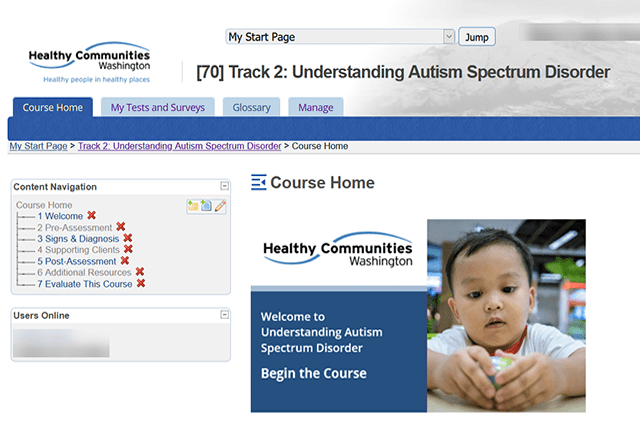Have you ever wondered why some training projects succeed smoothly while others seem to struggle along? The secret often lies not in the content, but in the clearness of the project scope.
Training projects face many challenges, from misaligned expectations and overextended budgets to unclear goals, leading to frustration and wasted resources. A study from PMI shows the primary cause of project failure is a lack of clearly defined objectives and milestones. In fact, 37% of projects fail because of unclear project boundaries.

At the heart of challenges that cripple projects is often a misunderstood or poorly defined project scope.
What Project Scope Is
The most important first step you’ll take on a new training project is defining the project scope.
Project scope refers to the thorough outline of a project’s goals, deliverables, and limits. It’s the blueprint that guides your project from conception to completion. A clear project scope lets you build a strong team, avoid unnecessary work, and lead your training project to successful goals within budget and on time.
This article covers seven expert tips that will help you define your training project’s scope—so you can be that much closer to success from the very first step.
Why Scope a Project?
Creating the project scope is a basic process that guarantees every person involved–from project managers to team members to training vendors—has the same understanding of your project’s purpose, goals and deliverables.
The scope of the project is the central part to any professional development project. If the project isn’t managed well, it can become a struggle for everyone to get through. It could fail your learners too.
Training projects can get messy fast. That’s why project scoping is such an important step, as it is in any project management process.
Following a solid project scope can help make sure that you, and every other person involved in the project understand the scope of the project and how it will be delivered.
But first, a definition.
What is a training project scope statement?
A project scope statement (training or otherwise) is a written document that outlines every part of an upcoming project, including what the result will be.
This document is your directional aid as you go through the project, and it’s your starting point. Everybody on the team should agree to the scope statement before the project starts.
This scope is especially important if you’re working with a training vendor, such as Talance, because it tells us what exactly you want and what your budget covers. This helps us understand what you expect us to do, and it helps everyone identify tasks that aren’t part of the scope and that can derail a project (aka “scope creep”).
7 factors you should keep in mind as you work through scope.
1. Start with the end in mind.
A good project scope statement should start with the end goal. Then it should describe what needs to happen to hit that goal. This helps everyone involved understand the purpose of the project and agree on what success looks like.
This section is also called the “justification.”
For example, you might need to launch a DEI (diversity, equity and inclusion) course for your team. So you need to justify the course project by specifically stating why. This could be because your workplace policies say you should, because it creates a more positive work place, and because it helps everyone understand the nature of your work better, or a combination of all those.
2. Include details about the project’s purpose, audience, and goals.
The next part, the project scope description, is where you’ll summarize the aim of the project. This should cover:
- Start by defining the project’s purpose. What do you hope to do? Why does it matter? How will it benefit others?
- Describe the audience. Who will use the product/service? What are their roles and responsibilities?
- Define the project’s goals. What are the most important things you need it to do? What are the deliverables?
3. Describe what will be delivered.
In the acceptance standards section of your project scope statement, include any more requirements. Will there be any special equipment needed? This would be appropriate if you’re developing a course to be presented in person and you need a trainer there. Or, you might need someone to supply all training materials, like workbooks.
Is there an existing process that needs to be followed? If your organization has protocols to follow, name them. Or if you’re training people in recognized core competencies, such as those for medical interpreters or community health workers, specify it here.
You may be more specific in this section and note items such as:
- An approximation of how much time will be spent on each task. This will help the project timeline realistic.
- List any risks connected with the project. If something goes wrong, who will be responsible?
- Provide a budget estimate. This helps everyone involved understand whether the project is possible. This is also important if your project is grant funded and you have a fixed amount.
4. List out the deliverables.
Deliverables are the results of the work done by the team members. They should be clearly defined in your project scope so that everyone knows what they need to do. This is very important to training vendors because they need to know if you want a 30-minute training or a 3-minute video.
If you’re not sure, check with a vendor, such as Talance, who can help you sort out what needs to be done.
Make sure that the deliverables are measurable. If for no other reason, you can add it to a checklist.
Measurable deliverables will help you keep spending in check and calculate the return on your training investment. Training programs are expensive, so you need to be able to show how well your new training project works.
5. Select milestones.
To move forward, your training project needs milestones. These are markers that sometimes match up with deliverables. But sometimes, they’re a signoff for something you’ve received, such as the delivery of a workbook or an online course. Milestones for Talance’s projects are usually one or all of the following:
- Project approval
- Design signoff
- Phase milestones
- Final approval
6. Identify constraints.
Project constraints are the limitations of the project. Usually, these are time or cost. So, your project scope needs to be clear about when the project will start and end. Provide a detailed schedule, if you can.
Constraints are important because they set bumpers for the project. They aren’t bad. Training developers usually like to know within what world they can work.
7. Explain how the project will be measured.
If you’re not measuring the success of your projects, then you won’t know whether you’ve succeeded or failed. You might think that you’ve completed a project successfully, but if no one else notices anything different, then you haven’t really done much.
If you’re looking for ideas, check out 10 Training Metrics to Measure the Effectiveness of Your Remote Training Program. Here are some that are commonly used in training projects, either in development or as the courses progress.
- Enrollment rates
- Logged in vs. completions
- Last login
- Learner progress
- Learner participation and engagement
- Total time spent in lessons
- Online assessments
- Knowledge-gain
- Certificates Earned
- Satisfaction
Hire Training Developers Who Are Project Managers Too
Simply putting together a project scope statement is a big job. It will definitely help the rest of the project move more smoothly. However, you can also guarantee success by finding developers who are also good project managers. That way, you can do the planning up front and know that your training project is one step closer to success.



